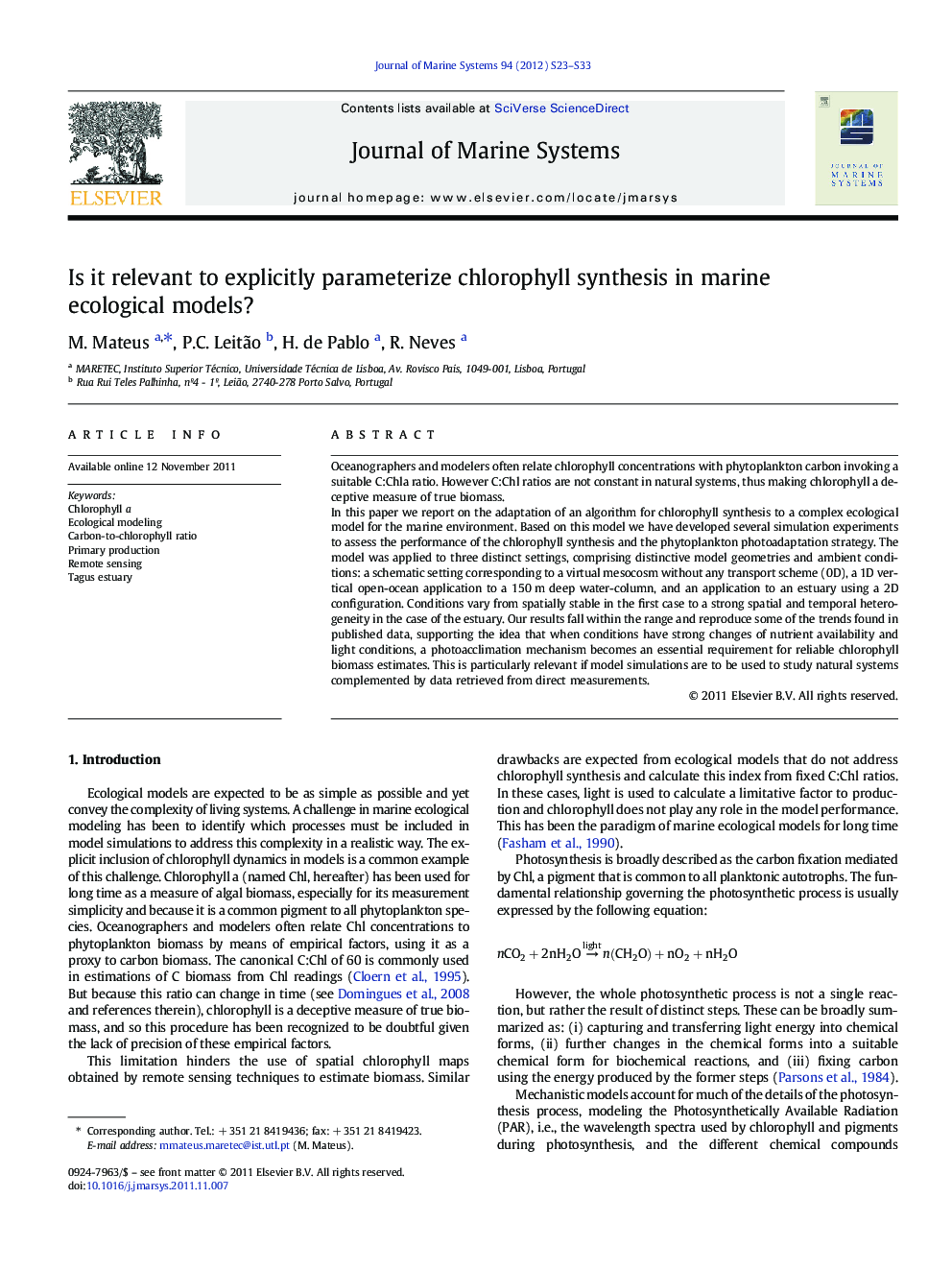| Article ID | Journal | Published Year | Pages | File Type |
|---|---|---|---|---|
| 4548305 | Journal of Marine Systems | 2012 | 11 Pages |
Abstract
In this paper we report on the adaptation of an algorithm for chlorophyll synthesis to a complex ecological model for the marine environment. Based on this model we have developed several simulation experiments to assess the performance of the chlorophyll synthesis and the phytoplankton photoadaptation strategy. The model was applied to three distinct settings, comprising distinctive model geometries and ambient conditions: a schematic setting corresponding to a virtual mesocosm without any transport scheme (0D), a 1D vertical open-ocean application to a 150Â m deep water-column, and an application to an estuary using a 2D configuration. Conditions vary from spatially stable in the first case to a strong spatial and temporal heterogeneity in the case of the estuary. Our results fall within the range and reproduce some of the trends found in published data, supporting the idea that when conditions have strong changes of nutrient availability and light conditions, a photoacclimation mechanism becomes an essential requirement for reliable chlorophyll biomass estimates. This is particularly relevant if model simulations are to be used to study natural systems complemented by data retrieved from direct measurements.
Related Topics
Physical Sciences and Engineering
Earth and Planetary Sciences
Oceanography
Authors
M. Mateus, P.C. Leitão, H. de Pablo, R. Neves,
